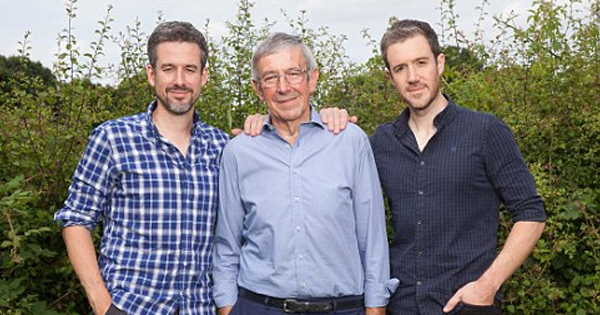Advertisement
Geoff Whitington had been living with Type 2 Diabetes for ten years, and the disease had slowly taken over his life.
He weighed 280 pounds. He wasn’t able to get around without the help of crutches. His fluctuating blood sugar had ravaged his blood vessels to the point that circulation to his feet had been reduced and created ulcers. His other foot bore the symptoms of Charcot foot, a side effect of diabetes that makes the bones of the foot weak, causing the arch to collapse.
After some time, Whitington’s ulcerated foot had worsened to the point that his doctors advised him to simply have the appendage amputated.
Whitington’s sons, Anthony and Ian, watched their father’s spirit decline after he received this news. “Instead of making him fight back, it was as if Dad thought: ‘I might as well give up now,’” Anthony said, “He started talking about putting his affairs in order.”
That was when the brothers decided to make a pact between themselves, and with their father.
After they had completed thorough research on Type 2 Diabetes, Anthony and Ian sat down with their father to announce that they were holding an intervention to help him reverse his health complications and improve his outlook on life.
“We insisted that if he could stick to the diet and exercise plan we had devised for him, we could hopefully enable him to spend another 20 to 30 years with us and his four grandchildren,” Anthony recounted.
The first step in Anthony and Ian’s intervention was to get their father to exercise again. Whitington started by biking half an hour each day, and Anthony jogged by his dad’s side every time.
When it came to changing Whitington’s diet, Anthony and Ian consulted Professor Roy Taylor of Newcastle University’s Diabetes Research Group. With Professor Taylor’s supervision, Anthony and Ian had their father adopt a diet that consisted of only 800 calories a day. Whitington could only eat green vegetables and lean proteins.
This was to help re-stabilize Whitington’s blood sugar levels. Anthony and Ian even went as far as adopting this dietary change for themselves, just so they could best understand which foods caused the largest or smallest spikes in blood sugar.
Whitington admits that he was initially resistant to his sons’ attempts to help him. “The role reversal was a shock. I saw it as my job to look after them, not the other way around. There were tantrums along the way,” he confessed.

But it wasn’t long until Whitington began to see significant changes in both his physical appearance and his health. He lost 84 pounds in seven months and slowly began to regain the circulation in his foot.
One year after Anthony and Ian’s intervention, Whitington had so greatly improved his health that he was able to complete a 100-mile charity bike ride and maintain his blood sugar levels within the normal range – without the help of medication. Professor Taylor confirmed this good news.
Whitington is over the moon about his success and hopes that his success can motivate and encourage others to take action on their own health conditions.
An added bonus? Whitington and his sons, Anthony and Ian, all feel much closer than they had before. Whitington said, “[My sons] showed me that the wonderful times we had together as a family didn’t have to end.”




